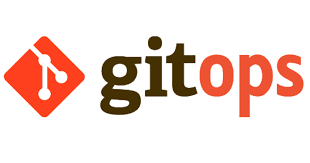3 min to read
What is GitOps?
Why is so important to use?

Table of contents
1. Intro
GitOps is a modern approach to managing and automating the deployment and operations of software applications and infrastructure. It leverages the Git version control system as the central source of truth for defining and managing the desired state of your systems. GitOps promotes a declarative and automated way of managing infrastructure and applications, making it easier to achieve continuous integration and continuous delivery (CI/CD) and ensuring the desired state is always reflected in the actual state.
1. Key Concepts
Git as the Single Source of Truth
In a GitOps workflow, all configurations, including infrastructure-as-code (IaC) and application code, are stored in a Git repository. This Git repository serves as the single source of truth for your infrastructure and application configurations.
Declarative Configuration
GitOps relies on declarative configuration files that specify the desired state of your systems. These files describe what the infrastructure and applications should look like without specifying the steps to get there. Popular tools like Kubernetes YAML manifests for container orchestration or Terraform HCL for infrastructure provisioning are examples of declarative configuration languages used in GitOps.
Automation
Automation is a fundamental aspect of GitOps. Continuous Integration (CI) pipelines monitor changes in the Git repository and automatically build, test, and package applications and infrastructure configurations. Continuous Deployment (CD) pipelines then deploy these changes to the target environments.
Version Control
GitOps benefits from the version control features of Git. This allows for tracking changes, rolling back to previous states, and auditing who made specific changes and when. Git’s branching and merging capabilities are also useful for managing parallel development efforts.
2. Benefits of GitOps
-
Consistency: GitOps ensures that the desired state is consistently applied across all environments, reducing configuration drift and the “works on my machine” problem.
-
Collaboration: Teams can collaborate effectively using Git’s version control features, enabling multiple contributors to work on configurations simultaneously.
-
Traceability: Changes are tracked and auditable, providing a clear history of who made changes and when.
-
Automated Rollbacks: If issues arise, GitOps allows for easy rollbacks to a known good state.
-
Scalability: GitOps can scale to manage complex systems and large-scale infrastructure as code projects.
3. GitOps Tools
Several tools and platforms support GitOps practices, including:
- Flux: A popular GitOps tool for managing Kubernetes applications and configurations.
- ArgoCD: Another Kubernetes-focused GitOps tool with a web-based UI.
- Terraform: A widely used infrastructure as code tool that can be used in GitOps workflows.
- Jenkins X: Extends Jenkins CI/CD to support GitOps for cloud-native applications.
4. Getting Started
To get started with GitOps, you’ll typically follow these steps:
- Set up a Git repository to store your configurations.
- Choose a GitOps tool that aligns with your infrastructure and application needs.
- Configure CI/CD pipelines to automate the deployment process.
- Define your infrastructure and application configurations in a declarative format.
- Push changes to your Git repository, triggering the CI/CD pipeline for automated deployment.
GitOps is a powerful approach for achieving infrastructure and application automation, ensuring consistency, and streamlining the DevOps workflow. By centralizing configuration in Git and automating deployments, teams can achieve faster and more reliable software delivery.
For more in-depth information and resources on GitOps, refer to the documentation of your chosen GitOps tool and explore best practices within your specific use case.

Comments